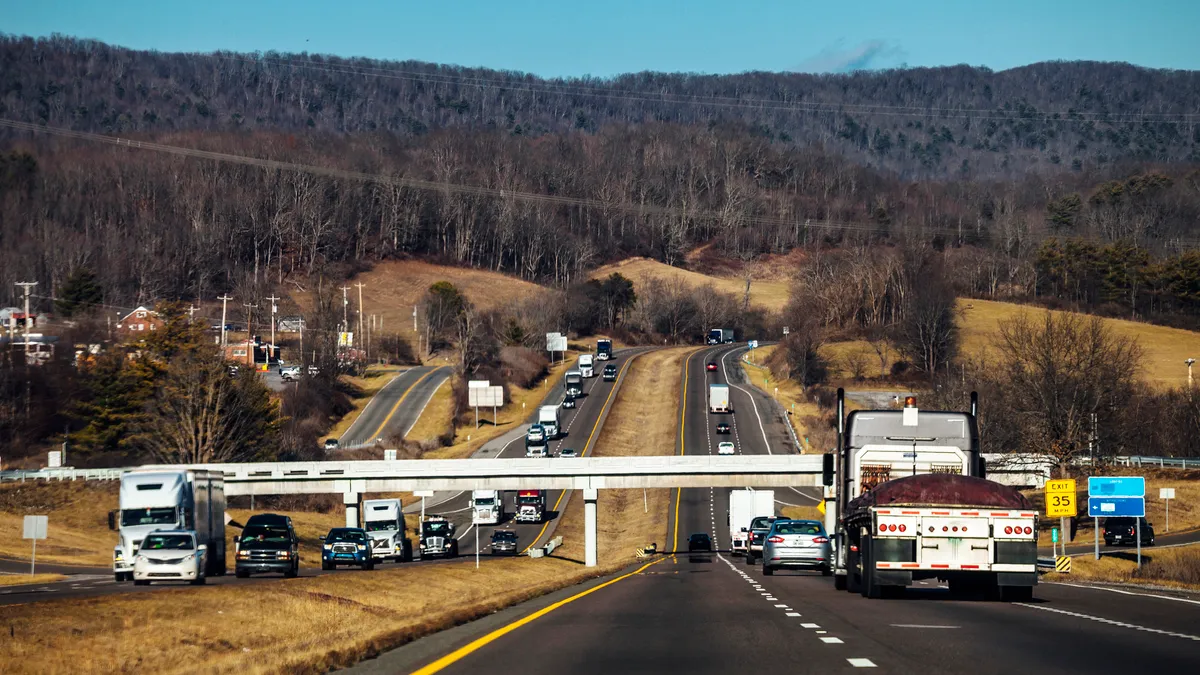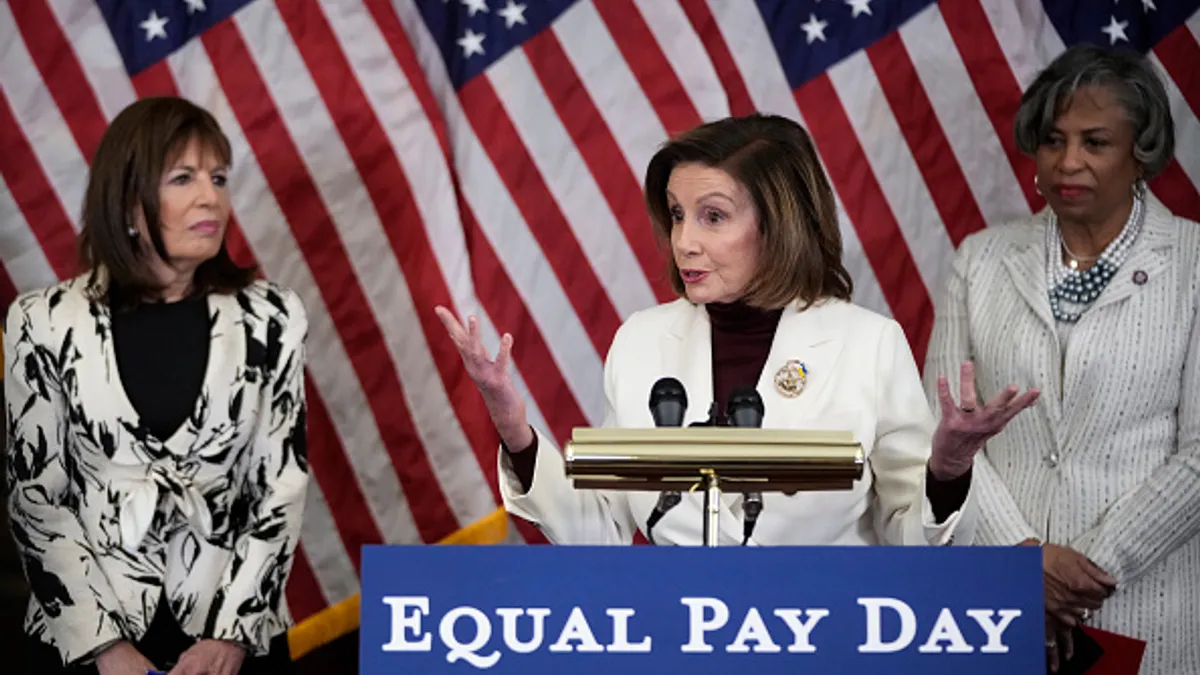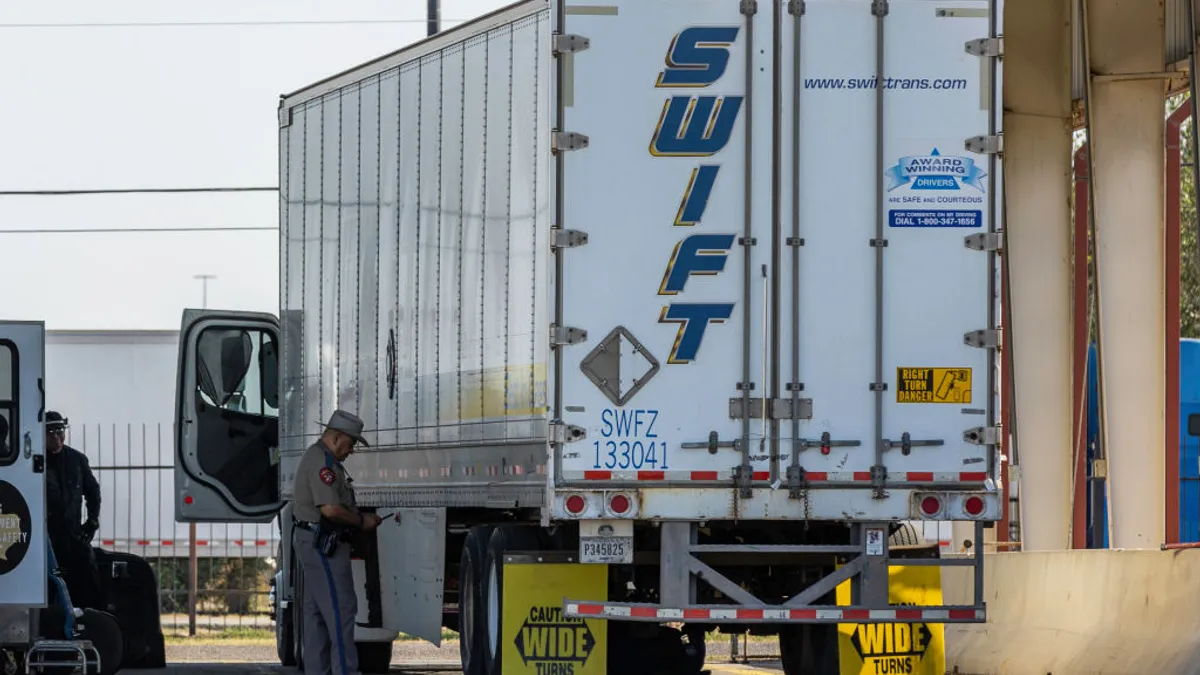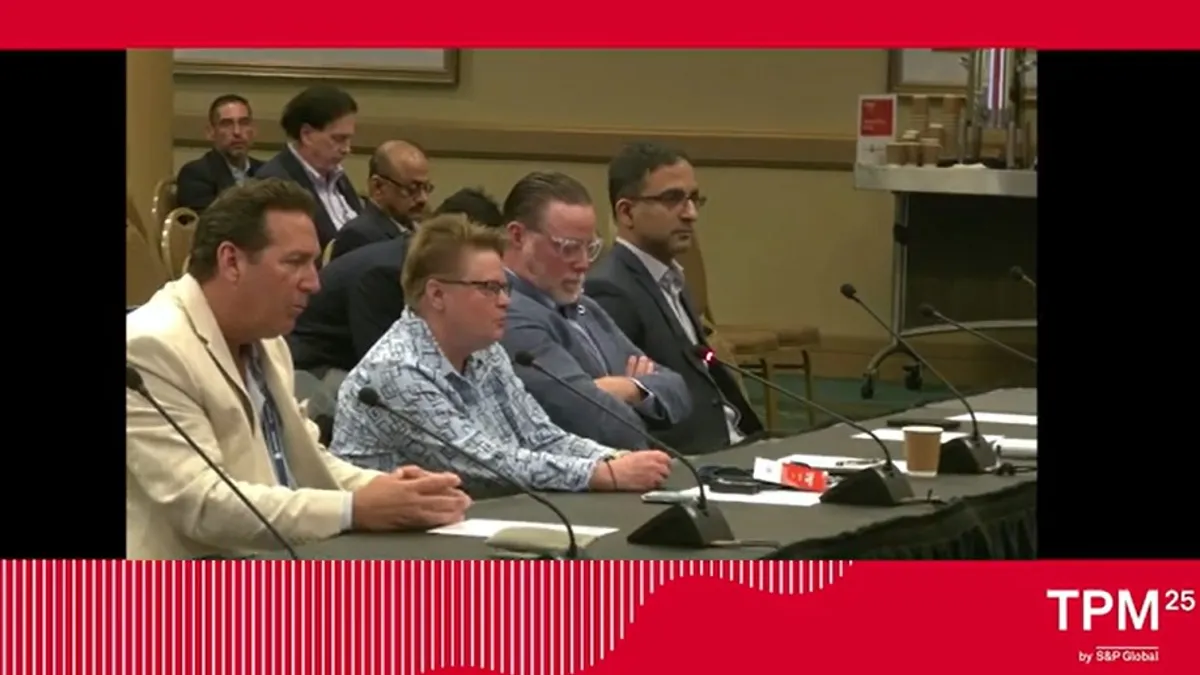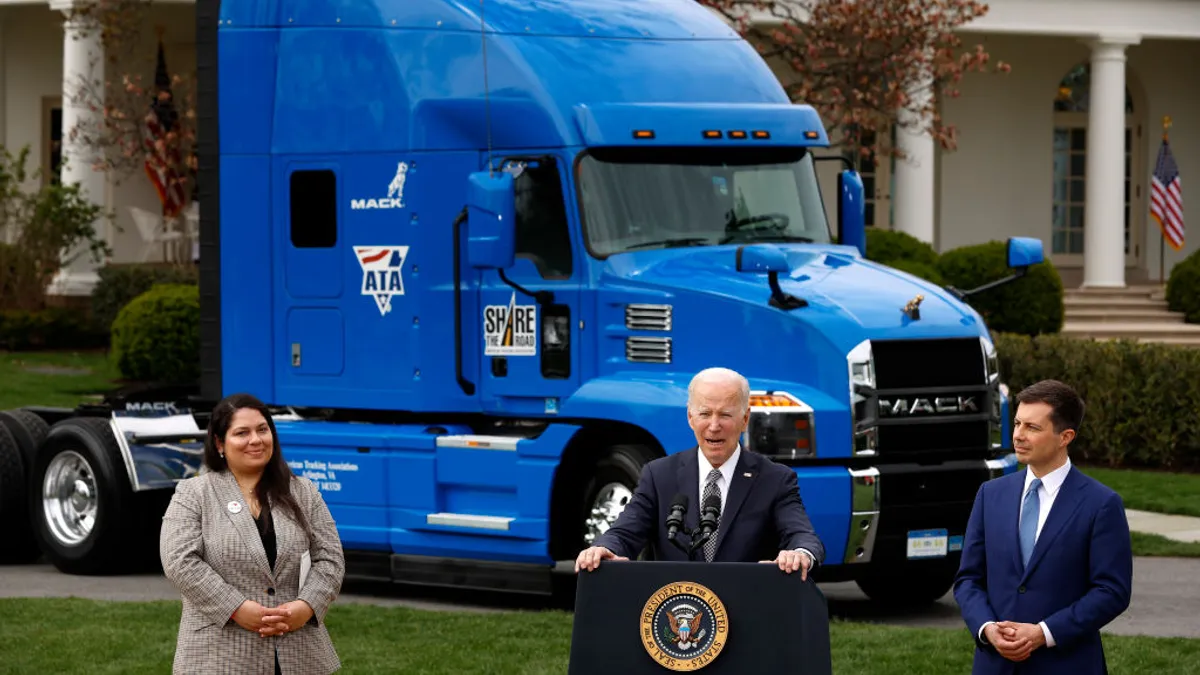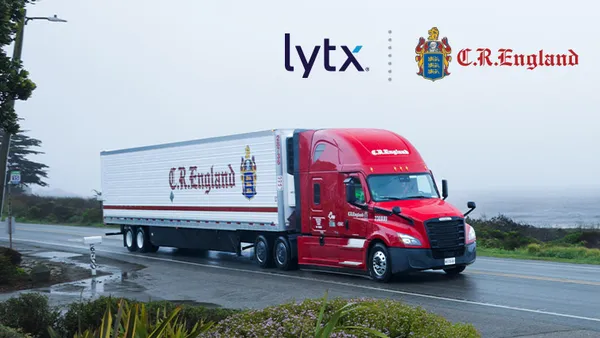This story is part of the Transport Dive Outlook on 2021, a series on the trends that will shape the industry in 2021. For a look at the business trends affecting other industries, see the Dive Outlook on 2021.
The new year is a time to start planning budgets and setting financial targets.
Many fleets responding to a Morgan Stanley survey expect continued tight capacity, high demand and elevated rates this year. Carriers are betting on widespread vaccine distribution to give way to a stronger 2021, particularly for the transport sectors sluggish in 2020, such as food service and industrial.
While many market factors are outside of fleets' control, firms can monitor and benchmark operational costs against industry averages.
Each year, the American Transportation Research Institute collects cost data from TL, LTL and specialized fleets and compiles the finding into a report — the most recent of which was published in Q4 2020.
The charts below illustrate trends in operational costs for fleets, according to ATRI's data.
Total truck operational costs
The trend
Trucking's average operational costs per mile vary year to year, based on several line items, including driver wages, equipment costs, tolls and fuel.
Costs fell 9% for TL carriers and 3.5% for LTL carriers from 2018 to 2019, according to ATRI. Reduced costs in several line items contributed to the drop after the freight boom in 2018, as outlined in many of the charts below.
The outlook
ATRI noted the decrease in operational costs did not apply evenly across all sectors — namely private truck costs, which increased from $2.73 in 2018 to $2.80 in 2019.
"The growing cost differential between for-hire and private fleets may move more private fleet trips to for-hire carriers in the future," ATRI wrote in its report.
The trend toward private fleets converting to dedicated carriage is beginning to appear. The COVID-19 pandemic created a volatile market that made contract a more viable option than private carriage for many fleets. J.B. Hunt said in November 2020 that it is targeting private fleet conversion as one of its largest growth opportunities.
Truck driver wages and benefits
The trend
Driver wages consistently make up the largest percentage of operational costs for fleets, and they were at one of their highest levels since ATRI began collecting data, despite a slight decrease from 2018 to 2019.
The ongoing driver shortage has prompted fleets to raise pay for drivers, in hopes of enticing new talent to the workforce and retaining truckers already on the payrolls.
Carriers also use driver benefits to recruit and retain drivers. More than 90% of respondents in ATRI's research said they offer health insurance, and nearly 90% provide paid vacation. But less than half of fleets said they give drivers paid sick leave.
Max Farrell, co-founder and CEO of WorkHound, said fleets are offering more premium insurance packages as a draw for drivers, such as 100% preventable coverage, plus vision, dental and life insurance.
"The 'innovative' response has been to offer healthcare at the same price while carriers 'absorb' the difference," Farrell said in an email.
Driver bonuses are not part of the wages or benefits calculation, but ATRI's data does indicate all types of bonuses (safety, starting and retention) increased from 2018 to 2019, with retention bonus values up more than 80%.
"Higher starting bonuses are likely to become more commonplace," ATRI wrote.
The outlook
Trucking wages often follow trends on the spot market, which has surged in 2020 alongside the demand for e-commerce. If the spot market continues to thrive in 2021, so will wages.
ATRI expects the driver shortage "to worsen in the coming decade," with estimates of a shortage reaching 160,000 drivers by 2028. The continuing trend will keep wages competitive and have fleets seeking ways to make the job of truck driving more attractive.
"Motor carriers are redesigning how they’re distributing work so that drivers can have consistent miles, but also have the ability to be home in bed every night," Farrell said, pointing to trends in more regional routes versus over-the-road and more drop-and-hook locations — all part of "creating a more desirable job experience."
Fleets are also adding flexible policies, such as allowing pets or family members on the road, Farrell said.
And the leading carriers are incorporating driver feedback into decision-making, according to Farrell. "This is only going to continue to expand across the industry, because it works well in so many other industries," he wrote.
Truck and trailer costs
The trend
Fleets' lease and purchase costs declined 2.3% in 2019 after a strong year of truck purchases in 2018. Still, costs are up significantly over the last decade, ATRI said in its report.
Data from 2020 will likely show increases in truck and trailer purchases costs per mile, as fleets accelerated their equipment buying from April through the end of the year. Volvo reported in October that fleets were resuming their pre-pandemic replacement cycles, resulting in truck orders increasing more than 60% YoY.
The outlook
"Truck lease and purchase costs are expected to remain constant over the coming year," ATRI said, noting a "tumultuous" buying period in the latter part of 2020.
Fleets have already locked in 2021 build slots for trucks and trailers, according to FTR, as carriers anticipate continued freight demand this year.
The used-truck market may also see increased activity. A flourishing spot market lured smaller carriers and owner operators into the industry, and these fleets often buy used equipment.
Fuel costs
The trend
Fuel was fleets' second highest line-item cost in 2019, after driver wages.
Costs are down with lower diesel prices mostly contributing to the drop, ATRI said. Lower diesel prices continued through 2020, which will likely reflect in fleets' fuel costs in ATRI's next operational costs report.
Fleet size plays a big role in fuel costs. Larger fleets have more bargaining power with fuel suppliers than smaller fleets. Large carriers also tend to operate newer trucks with better fuel efficiency, thus contributing to lower fuel costs.
The outlook
The U.S. Energy Information Administration expects petroleum demand to remain low through 2021, which will keep diesel prices and fuel costs low for carriers.
As carriers adopt more fuel efficient vehicles and even hybrid, battery-electric or hydrogen trucks, average fuel costs will continue to decline — although that cost may show up in other line items, such as equipment.
Tires
The trend
Tire costs have largely trended downward over the last decade, though the decrease is less than 1 cent per mile, or about 25 cents per hour, since 2011.
These costs often operate in tandem with fuel costs, as the tires are derived from petroleum.
The outlook
At the time of ATRI's report release in November, the research organization began to observe demand for replacement tires as freight activity picked up.
"Tire demand will reflect economic activity," ATRI stated, adding that tire costs are expected to rise over the next year.
Truck insurance premiums
The trend
"The cost of trucking insurance has increased drastically over the past 5-10 years," Jennifer Nuest, transportation marketing coordinator for HUB International Transportation Insurance Services, said in an email. She attributed the rise to inflation and rising incidences of nuclear verdicts, which are legal awards of more than $10 million.
Despite the insurance cost trend, ATRI's data shows a drop in insurance costs from 2018 to 2019, which the institute described as "the most surprising cost center decrease."
ATRI consulted with insurance experts on the cost decline and concluded that the industry is maxed out in its ability to pay high insurance premiums. As a result, fleets have increased deductibles and reduced excess coverage.
"While these short-term approaches to manage cost increases appear to be stabilizing insurance costs, the long-term result is a potentially catastrophic increase in accrued carrier risk," ATRI wrote.
Rising insurance premium have put the issue on the trucking industry's radar once again. For the first time in 15 years, insurance availability and cost ranked in the top five industry issues.
Coronavirus-related safety measures didn't impact insurance premiums much, Nuest said. But fleets changing what commodities they hauled, when demand grew in some categories and fell in others, may have increased insurance premiums due to perceived risk of hauling an unfamiliar product, she said.
The outlook
ATRI and Nuest said insurance premiums will continue to rise. Primary auto coverages are expected to increase between 5% and 15% in 2021, Nuest said.
Implementation of safety tech will help to moderate the insurance increases, according to ATRI and Nuest. Nuest gave examples of cameras for coaching drivers, along with strong safety culture at trucking firms.
Changes to tort reform at the state level could also help level out insurance costs.
"Once insurance carriers are realizing profits again, they will be able to stabilize rates," Nuest said.





